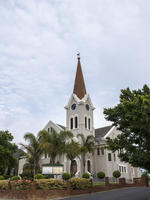Twin Towns

Riebeek Kasteel and its sister town, Riebeek West, are two of the oldest towns in South Africa. It was founded around 1661 when Jan van Riebeeck sent a group of explorers on an expedition to discover the inland of South Africa.
The group was led by Pieter Cruythoff (a hiking trail in the area is named after him) and after they discovered the Riebeek Valley, they named it Riebeek Kasteel in honour of the commander himself.
In the 17th century, governor Simon van der Stel’s son Wilhem opened up the area of Riebeek Valley for farmers who had not yet gotten land. Some of the farms established back then are still working today. Riebeek Kasteel then became a Company outpost, because farmers did not want to leave their farms unprotected and journey to the Cape for official Company business.
A canon was mounted on top of Kasteelberg, which was part of a signalling system with the Cape. It is now preserved in Riebeek Kasteel’s town square.
Some of the farmers that settled in the Riebeek Valley were Hugenots, so vineyards were immediately erected to start wine farming. Most of the grapes had a high fructose content and sweet wine was originally produced first, or they were distilled to make brandy.
In the mid 1730s, some farmers retired and move the more quiet town of Riebeek West. Riebeek West was a grander town than Riebeek Kasteel, as seen in their style of houses. It had more wealth and had a better railway station.
In the 19th century, both DF Malan and Jan Smuts, prominent figures in South African history, were born on farms in the Riebeek area. The towns developed separately and are now important agricultural areas.
A Dutch Reformed Church was built in the 1850’s in Riebeek Kasteel (which still stands today and is known as De Oude Kerk). A church in Riebeek West was opened in 1858.